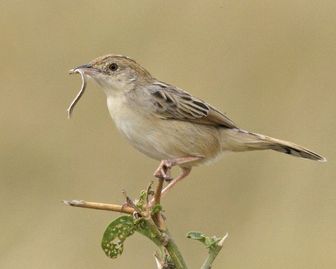Desert Cisticola
The Desert Cisticola is a species of bird in the Cisticolidae family. It is found in Angola, Botswana, Burkina Faso, Chad, Eritrea, Ethiopia, Kenya, Lesotho, Mali, Mauritania, Mozambique, Namibia, Niger, Nigeria, Senegal, Somalia, South Africa, Sudan, Swaziland, Tanzania, Zambia, and Zimbabwe. Its natural habitats are dry savanna and subtropical or tropical dry lowland grassland.

Original source: Lip Kee Yap from Singapore, Republic of SingaporeCamera location
Author: Lip Kee Yap from Singapore, Republic of SingaporeCamera location
The Desert Cisticola is classified as Least Concern. Does not qualify for a more at risk category. Widespread and abundant taxa are included in this category.
The Desert Cisticola (Cisticola aridulus) is a species of bird in the Cisticolidae family. It is found in Angola, Botswana, Burkina Faso, Chad, Eritrea, Ethiopia, Kenya, Lesotho, Mali, Mauritania, Mozambique, Namibia, Niger, Nigeria, Senegal, Somalia, South Africa, Sudan, Swaziland, Tanzania, Zambia, and Zimbabwe. Its natural habitats are dry savanna and subtropical or tropical dry lowland grassland. References - * BirdLife International 2004. Cisticola aridulus. More
Distribution of Desert cisticola in southern Africa, based on statistical smoothing of the records from first SA Bird Atlas Project (© Animal Demography unit, University of Cape Town; smoothing by Birgit Erni and Francesca Little). Colours range from dark blue (most common) through to yellow (least common). See here for the latest distribution from the SABAP2. More
a picture of the Desert Cisticola on page 912. The Desert Cisticola belongs to the family of birds classified as Cisticolidae. According to the Percy FitzPatrick Institute of African Ornithology the Desert Cisticola is also known by these other names: Desert Fan-tail Warbler, Swift Cisticola. More
Family : Cisticolidae
Genus : Cisticola
Species : aridulus
Authority : Witherby, 1900

